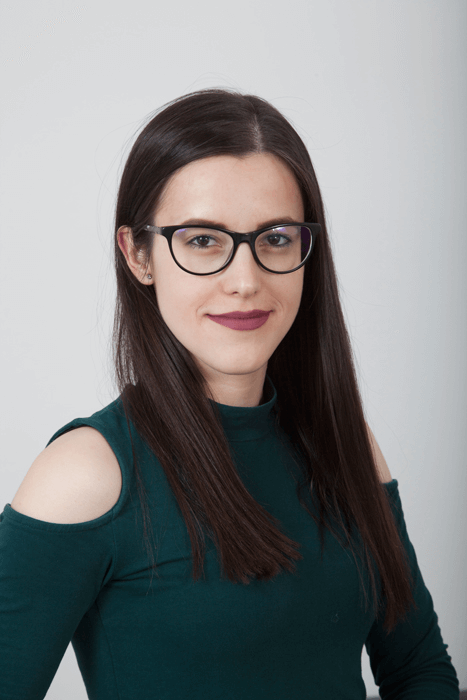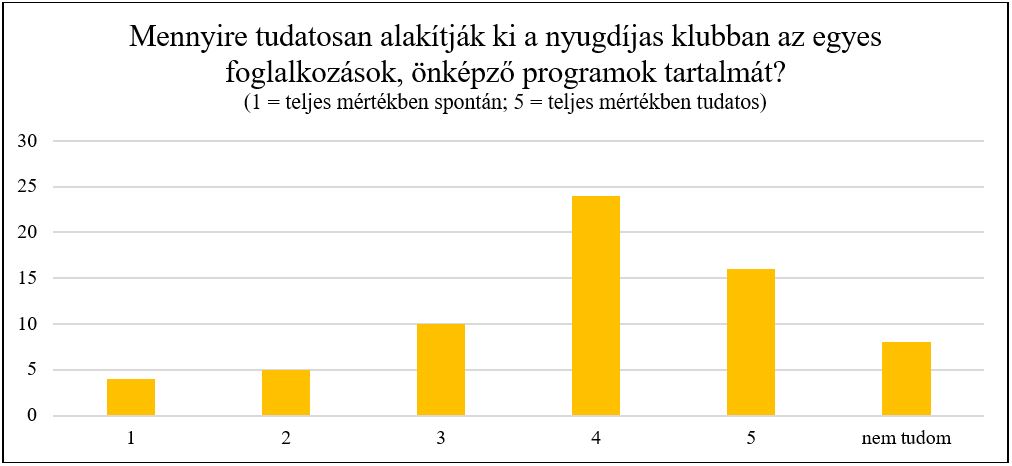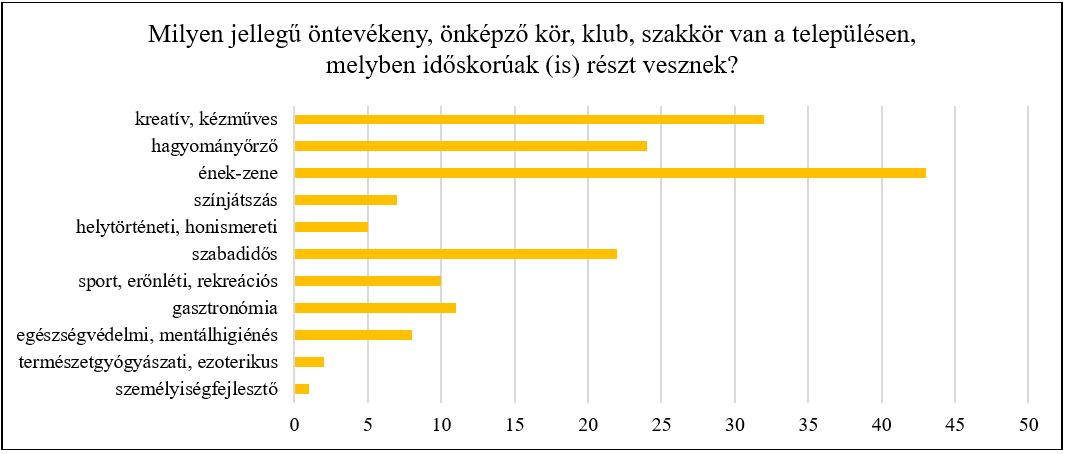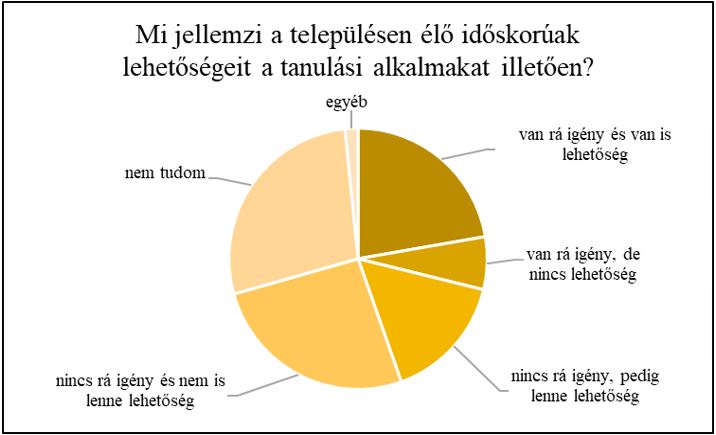Dorottya Oszterman: Lifelong learning in cultural education in Borsod-Abaúj-Zemplén County
Cikk letöltése: pdf2021-06-01

Abstract: Due to the development of medicine and the improvement of the quality of living, the average age is augmenting and Hungary’s population is ageing as well. Because of the increase of average life expectancy and the expansion of education, newer generations revaluate their senior years. My research is about the connection between the community culture and the learning opportunities of Borsod-Abaúj-Zemplén county, focusing on lifelong learning and the elderly. The research questionnaire was filled in by 184 settlements of the examined county (all of them were assistants in community culture). Overall, although most of the settlements are ageing, the community culture of Borsod-Abaúj-Zemplén county does not emphasize the elderly as a target group and the assistants are not aware of cultural learning needs of the elderly population. However, there are many informal and non-formal learning opportunities in the county that are attended by the elderly, of which we can read examples below.
Learning and community education
With the development of medicine and the improvement of the quality of life, the average age is increasing, therefore, we can talk about an aging society in Hungary as well. Due to the longer life expectancy and the expansion of education, old age is re-evaluated for the more and more educated generations. One of the hypotheses of my research is that nowadays, the older age groups increasingly demand active intellectual pursuits especially designed for them.
My second hypothesis is that, in addition to the fact that the older generation requires these activities, they are also in need of them, because this is the only way they can adapt to the constantly developing society. The only way they can acquire the knowledge necessary for everyday life or perhaps for employment in retirement is to learn life long, also when they are ageing.
In my opinion, since the county of Borsod-Abaúj-Zemplén is especifically affected by the problem of ageing settlements, it is even more important in this region to provide the elderly with opportunities for intellectual activity. Thus, the third hypothesis of my research is that the Borsod-Abaúj-Zemplén county cultural education institutions contribute to the lifelong learning of the elderly living in the region with various learning opportunities.
So, overall, I would like to find the answer to the question whether providing the conditions for life-long learning among the basic cultural education services is realised in the above-mentioned county and if so, to what extent. My research is relevant, as senior academies/open universities, universities of the third age, folk high schools, and similar initiatives have become increasingly popular in Hungary in recent years.
Questionnaire-based research with the cultural education specialists of the county
The system of cultural institutions creates opportunities for lifelong cultural education of the individuals and communities. The cultural learning achieved here is nothing more than a non-formal and informal learning activity, which is realized by the cultural institutional system and its tools. Some people consider leisure learning opportunities as cultural learning, and learning processes started on a civic initiative as community learning. According to the study of Kuthy-Megyesi and Takács-Miklósi, several researchers (e.g. Mátyus 2006, Márkus 2015) highlight the training and adult education function of cultural education. Cultural education can make out-of-school cultural education, training, entertainment, information, and community learning opportunities an integral part of the local society. (Kuthy-Megyesi – Takács-Miklósi 2018)
Among the basic services of cultural education, the possibility of lifelong learning is considered to be a separate service. Non-formal, informal, cultural learning is connected to other basic services (e.g. traditional community cultural values, amateur creative and performing art activities). (EMMI Decree 20/2018. (VII. 9.))
My research specifically focused on the learning opportunities of the elderly. Active ageing includes both physical and mental activities It is not only useful for the individual, but also for the society if citizens reaching their old age remain active as long as possible, since these people are biologically, socially, and emotionally more flexible, prosperous, they can provide for themselves and manage their lives for longer, what is more, their health span also extends. (Boga 2016:23-24) Apart from giving pleasure, the non-formal and informal learning opportunities taking place in cultural education also increase the self-confidence of the elderly. During these occasions, they can acquire new skills and knowledge. The above-mentioned community programs also contribute to the prevention of age-related isolation and help maintain both their physical and mental health. Mászlai believes that in community centers (that is cultural education institutions and community scenes) the elderly have a lot of opportunities to join cultural and learning activities, let them be in clubs, study circles, or educational presentations. (Maszlai 2015)
Before the survey, I conducted research into cultural education and gerontagogy and analyzed demographic and cultural statistical data for the county (KSH, KULTSTAT, TeIR, etc.). With my empirical research, I wanted to assess whether the conditions for life-long learning are provided in the cultural education institutions and community scenes of the settlements of Borsod-Abaúj-Zemplén County, and if so, to what extent and how and what kind of learning opportunities are available for the elderly in the settlements. Accordingly, I chose the method of questionnaire-based research, as this method is suitable for obtaining data from a large population relatively quickly. (Cserné Adermann-Ponyi 2018) My questionnaire of forty questions consisted of three main sections:
- • questions related to the applicant and the settlement,
- questions concerning the cultural education of the settlement,
- and mostly closed questions about learning in old age.
In this study, I will present the answers received to the different parts of the research. Since the questionnaire was tailored to cultural education assistants employed in the settlements, in this phase of the research I wanted to address them using targeted selection. (Cserné Adermann-Ponyi 2018:21)
My goal was to receive questionnaires from half of the settlements (358) in the county, i.e. from 179 settlements. In the end, my questionnaire was filled in in about 184 settlements, so I managed to query 51.40% of the settlements of the county.
I managed to carry out my research thanks to the National Institute of Culture, as their Borsod-Abaúj-Zemplén County Administration employs cultural education assistants in nearly 200 settlements within the framework of the Cultural Education Employment and Training Program, so I had a database of possible candidates at my disposal. It is also necessary to know that in the case of settlements with a smaller population, it may also happen that one assistant carries out cultural education tasks in two or even three settlements, although the majority of assistants work only for one settlement.
The survey took place via Google Forms since in the current pandemic situation it was not advisable to choose a personal survey method. As I wanted to cover the entire area of the county, it would have meant a lot of travelling. It was much easier this way, the assistants could answer the questions simply and the online nature of the questionnaire was not problematic for them, since they all had already used Google Forms during the Cultural Education Employment and Training Program.
There are 16 districts in the county, and I received completed questionnaires from all of them. There were districts where I managed to reach almost every settlement (e.g. Putnok and Mezőcsát districts), but there were also districts that were more difficult to reach (e.g. Szikszó, Kazincbarcika, and Tokaj districts). This may also be because the participants of the Cultural Education Employment and Training Program do not necessarily represent the individual districts in the same proportion.
Concerning the population of the settlements, almost half of the respondents (43.48 %) provide cultural services in small settlements with a population of less than 500. This is followed by settlements between 500 and 1,000 people with 28.26%, and then 23.91% by villages and towns with 1,001-5,000 inhabitants. Relatively few of the surveyed settlements have a population over 5,000. Thus, the research adequately represents the structure of the settlements of Borsod-Abaúj-Zemplén County, since the entire county typically consists of villages with a smaller population and only a few large (larger) cities.
I considered it important to enquire how long the cultural assistants had been living/working in the settlement, as this greatly influences how well they know the settlement and how relevant their answers could be. More than half of the respondents (52.71%) had been living in the surveyed settlement since birth or at least for 10 years, and another 16.84% had been living and/or working there for 1-10 years, so they presumably have a greater insight into the life and cultural education. However, nearly a third of them (30.43%) moved to the given settlement less than a year ago. This is probably because they only came to the settlement to take the position of cultural education assistant thanks to the Cultural Education Employment and Training Program. Typically, these people live close to the place of employment, so they probably live in one of the neighboring settlements, furthermore, the program has been running since November, and they may have managed to map out the local features and customs to some extent since then. ---
Non-formal learning habits of the elderly
The questionnaire did not examine which basic services are provided by cultural education institutions and community spaces, but only covered activities that are clearly linked to lifelong learning in more detail. the following activities were included:
- out-of-school courses, a training sessions,
- self-motivated, autodidactic groups, clubs, study circles,
- folk high schools, open university programs,
- educational occassions.
In terms of target groups, the majority of courses and out-of-school trainings are not intended for specific age groups, and the the participants are mixed. There are a smaller proportion of family, youth and children's programs, and the smallest proportion is intended for pensioners. This is interesting because regarding the courses, most settlements highlighted the digital competence development, especially IT knowledge sharing courses especially for the elderly, yet, pensioners were not identified as the primary target group of these courses. Similar numbers can be seen in the case of educational events. According to the cultural education assistants, pensioners appear in a small proportion here as well, even though they probably make up the majority of the audience of health-conscious lectures and other educational events.
In the case of self-motivated, autodidactic groups, clubs, and study circles, the number of events for the retired is already larger, besides, there are also mixed events that are not intended for any age groups, while children, youth and family programs are implemented in a smaller proportion. With the exception of the children's and pensioners' age groups, the respondents indicated the same for the folk high school and open university events, so in the settlements where there are such events, those are mainly intended for the youth, families or mixed target groups.
As a separate question, the respondents had to answer whether there are learning occassions organized especially for the elderly - according to the given categorization - the answers were similar. More than half of the respondents clearly believe that there are no learning opportunities specifically organized for the given target group in the settlements. Where there are any, they are mainly classified as participants of study circles, clubs (e.g. pensioners' club) and educational presentations. Among other events, it is important to highlight the International Day of the Elderly / the Day of the Elderly, which is organized in various forms every year in many localities (e.g. evening for the elderly, pensioners' meeting, etc.).
In my opinion, the fact that so few people indicated pensioners as the target group of learning opportunities can be down to the fact that although (especially in aging settlements) the majority of participants come from this age group, they are not the primary target group of the events. They want to appeal to groups of mixed ages, however, because of the lack of free time, they can mainly reach and motivate the elderly.
If there are events for the elderly in the settlement, the vast majority of the interviewed cultural education institutions and community spaces, actively participate in the organization process and provide a venue for the program. There are also settlements where the cultural education service provider does not participate in the organization, but provides a venue for the events for the elderly. Just a smaller proportion of the institutions and spaces only help with the organization or do not help at all, and do not even provide a venue for pensioners.
Apart from cultural education institutions and community scenes it is the local governments and the churches who support the programs organized for the elderly the most in the surveyed settlements. They are followed by social institutions (e.g. day care for the elderly, human services), primary and secondary schools, and various organizations of the non-profit sector (e.g. Ormosbánya Elderly Club, Ács István Care Center and Elderly Club). Retirement/boarding homes, Digital Wellbeing Program Points, as well as libraries and museums (e.g. Tibor Tollas Memorial House, Museum of Antiquities – heritage house museums) appear as supporters, but they are present in one or two settlements.
In addition to the formal, non-formal and informal learning opportunities that take place in the settlements, retirement clubs also play a major role in the lives of the elderly, which provide them with additional learning opportunities. That is why the questionnaire also covered these mostly non-formal clubs with a special emphasis. The answers show that retirement clubs were only established in approximately one third of the surveyed settlements. Out of the 68 settlements in the category, 62 settlements have one such club, and in other 5 settlements 2-5 clubs have already been established.. The cultural education assistant employed at the county seat did not know the exact number of retirement clubs, but due to the size of the city, there are probably many more operating there than in smaller settlements.
Out of the surveyed settlements where there is a retirement club, the majority (72.06 %) can somehow be linked to a local cultural education institution or community scene. This is most likely to be realized by providing a venue, since 37 of the retirement club(s) of the surveyed settlements hold their meetings, events and classes in the cultural education institutions or the community scenes. In 21 settlements, the local government, in 11 settlements the social institution, and in another settlement the Reformed church community also provides venues for the elderly. There are only 7 settlements where the retirement clubs can hold their sessions in their own property.
Figure 1: Purposeful planning in retirement clubs
(Source: Author)

In those settlements where there are retirement clubs, more than half of the cultural education assistants have a positive opinion about how consciously the content of the sessions and autodidactic programs are shaped (see Figure 1). They believe certain kind of awareness or full awareness can be detected. About 10 retirement club sessions were thought to be organized both consciously and not consciously. And 4-5 people think that the activities of the retirement clubs operating in the settlement are somewhat spontaneous or completely spontaneous.
The questionnaire was closed by questions about self-motivated, autodidactic circles, clubs, and study circles. Of the 184 surveyed settlements, 95 stated that they do not have a club or study circle in which the elderly also participate, and another 12 respondents do not know abou such clubs operating.
Figure 2: Types of study circles
(Source: Author)

In settlements where there are such clubs and study circles, the most popular are the ones about singing-music (e.g. folk songs, choirs), followed by creative, handicraft clubs (e.g. embroidery, lace-making), tradition-preservation clubs, and leisure clubs (see 2. figure). In smaller numbers, there are gastronomy clubs, sports, fitness and recreation, health protection and mental hygiene clubs, acting clubs, as well as local history and local history study clubs. Naturopathy and esoteria as well as personality development occassions and study circles are orgnized in one-one settlement.
The study circles mentioned above were typically not created by the elderly and not for the elderly. That is, the target group for the club and study circle originally was not the age group of the retired, but for some reason they were reached with the program. There are several events created by seniors, primarily for the old aged. There are one or two examples among the surveyed settlements, where the non-elderly organize the given study circle or club for the elderly, or the elderly for the another age group.
Figure 3: Learning opportunities for the elderly
(Source: Author)

With the last question, I wanted to explore what characterizes the learning opportunities of the elderly in each settlement. However, almost a third of the respondents had no information about this (see Figure 3). The cultural education assistants of 48 settlements believe that there is no demand for such occasions from the elderly and they could not join them. 41 cultural education assistants are of the contrary opinion, that is, there is both demand and opportunities for learning occassions for the elderly. In 29 settlements there is opportunity for such events, but there is no demand, and in 12 settlements there is demand, but there is no opportunity. There was an assistant who pointed out that there is some level of demand, but they are so different that the organizers cannot meet the expectations. In the very aging settlements, the elderly group is around 80-90 years old, and this also a great challenge for cultural education professionals when organizing such programs. In several settlements it was reported that although there have been no learning opportunities for the elderly until then, they were in the process of organizing them. In spite of all this, it would be advisable for cultural education assistants to carry out community surveys in their settlement, in order to get a more comprehensive picture of the current needs of the people living there and to be able to shape the activities of the cultural education institution and community spaces accordingly.
Summary
No clear conclusion can be drawn from the first hypothesis of my research, which assumes that people belonging to the older age group are increasingly in need of active mental activities designed especially for them. The analyzed literature shows that this need is present indeed in an increasingly large group of elderly people. However, in our research, the majority of those interviewed had no information about this, or answered negatively, saying that the elderly do not have this need, and thus there are no similar programs in their settlements. Based on the answers received, we can state that the cultural education assistants do not have, or only have an incomplete picture of the needs of the elderly living in their settlements. In my opinion, it would be beneficial to conduct representative questionnaire research with a similar structure among the elderly living in the settlements, however, this would be difficult to implement in the current epidemiological situation. Nevertheless this is the only way to see to what extent the the views of the cultural education assistants and the elderly are in harmony with each other.
My second hypothesis was partially confirmed. Which means that apart from the fact that the older generation requires these activities, they also in need of them, since they can acquire the knowledge necessary for the continuously developing society by learning life long. The questionnaire made it clear that the majority of formal and non-formal learning opportunities in the cultural education institutions and community scenes of Borsod-Abaúj-Zemplén County focus on the world of work and the competencies required for the developing society. The literature also suggests that life-long learning is necessary for the elderly from this point of view, although these occasions are not organized especially for the elderly in cultural education. Even in the case of digital competence development trainings, the elderly do not appear clearly as a target group. Cultural education professionals do not target them with their programs, however, they are often the only age group that can be reached (e.g. due to free time). And what is targeted for the elderly is rather non-formal, or informal in nature, since, for example (more official) folk high schools and open university programs are not usually organized in most settlements as we have already seen.
The same is true for my third hypothesis. Although it has been proven that some of the cultural education institutions and community spaces in Borsod-Abaúj-Zemplén county contribute with various learning opportunities to the lifelong learning of the elderly living in the region, they do not seem to deal particularly with the mentioned age group.
All in all, I believe that since Borsod-Abaúj-Zemplén County has such a large number of aging settlements, it would be necessary to assess the needs of the elderly and to adapt the cultural education activities accordingly. Since in many cases the elderly are the easiest target group to reach, it is advisable to modify the programs they visit according to their needs. However, for this, the openness of cultural education specialists (and the elderly living in the settlement) and the appropriate professional knowledge of the assistants are essential. The Cultural Education Employment and Training Program of the National Institute of Culture can greatly help with the latter, since during training and workshops, cultural education assistants can learn the basics of community surveys, as well as other good practices of the profession.
In my opinion, it would be worth repeating my research in a year's time among the previously questioned participants, or involving new target groups during the next stages (e.g. the elderly population, retirement clubs, organizations dealing with the elderly, etc.), then we could get a completely comprehensive picture of the relationship between cultural education in the Borsod-Abaúj- Zemplén County and learning in old age.
References
- 20/2018. (VII. 9.) EMMI rendelet a közművelődési alapszolgáltatások, valamint a közművelődési intézmények és a közösségi színterek követelményeiről. In: https://njt.hu/jogszabaly/2018-20-20-5H, letöltés ideje: 2021.02.03. 17:21 h.
- Boga Bálint (2016): Tanulás időskorban: a sikeres idősödés szellemi tengelye. In: Művelődés – Népfőiskola - Társadalom, 2016. év 4. szám, 22-24.p.
- Cserné Adermann Gizella – Ponyi László (2018): Kultúrakutatás módszertani alapjai. In: Juhász Erika – Márkus Edina (szerk.): Tudástár a közösségi művelődésben. Budapest, NMI Művelődési Intézet Nonprofit Közhasznú Kft.
- Kuthy-Megyesi Judit – Takács-Miklósi Márta (2018): Az egész életre kiterjesztett, élethosszig tartó tanulás a közművelődés tükrében. In: Kulturális Szemle, V. évf., 2018. évi 1. szám, 87-95.p.
- Márkus Edina (2015): Közművelődés és felnőttképzés a statisztikák tükrében. In: Kulturális Szemle, I. évf., 2015. évi 1. szám, 55-69.p.
- Mászlai Olga (2015): Az idősek non-formális és informális tanulásának főbb színterei, lehetőségei. In: Kulturális Szemle, II. évf., 2015. évi 1. szám, 122-129.p.
- Mátyus Aliz (2006): Dr. Gelencsér Katalin a Nemzeti Kulturális Örökség Minisztériuma Közművelődési Főosztályának képzési referense a képzésről. In: Szín, 11. évf. 3. szám, 1-5.p.
